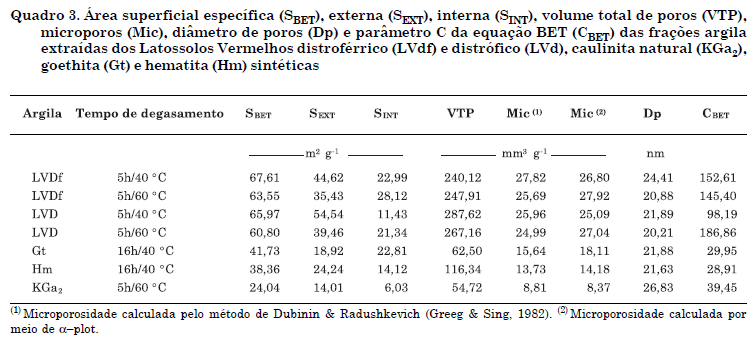The porosity of the clay fraction is very important for the understanding of the physicochemical phenomena which are relate to the specific surface area of solid particles. The specific surface area (S BET) and porosity of clay fractions of two Rhodic Ferralsols in the state of Mato Grosso do Sul, Brazil, natural kaolinite (KGa2), synthetic goethite (Gt) and hematite (Hm) were evaluated through adsorption and desorption isotherms of N2.. Results concerning S BET and particle porosity were related to the maximum P adsorption capacity (Pmax) estimated by the Langmuir isotherm. The predominant pore class in the clay fractions was mesopores. The clay fractions of the soils and KGa2 adsorbed similar amounts of P per unit area, but differed from the quantities of P adsorbed by Gt and Hm. This difference was possibly related to the abundance and distribution of OH groups on the surface as well as imperfections on the material surface. The iron and aluminum oxides and other amorphous material in the clay fractions of the soils were more important than kaolinite for P adsorption. Kaolinite, the main phyllosilicate in the clay fractions of LVDf and LVD soils, was less relevant for P adsorption.
kaolinite; hemathite; goethite; mineralogy; clay; isotherm; phophorus fixation










